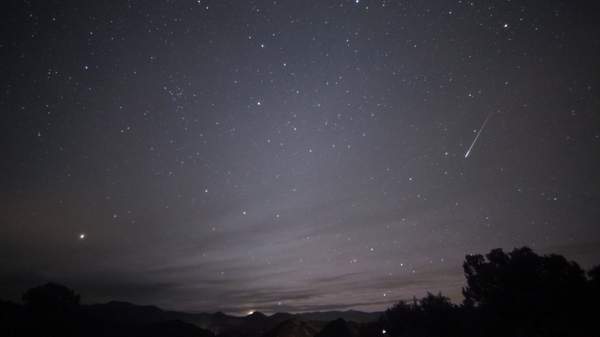Overview
May has the Eta Aquarid meteor shower, June boasts the Delta Aquariids and December welcomes the Geminids. In November, however, it's Leonids time.
Arriving at the end of spring in Australia and New Zealand, the Leonids may not be quite as well known as some of its counterparts, but it's still a shower worth looking up for. And it's famous for one impressive reason: its spectacular meteor storms. It can feature more than 1000 meteors per hour, but it only occurs around every 33 years — and, sadly, the most recent occurred in 2001. Still, while you won't spy that kind of intense onslaught in 2020, you will still see meteors. The Bureau of Meteorology predicts there'll be around five per hour hurtling across the heavens on average. At its peak, timeanddate.com predicts 15 per hour.
In good news for those Down Under, the Leonids can be seen in the Southern Hemisphere. Although it runs from Friday, November 6 until Monday, November 30, it's best detected between Saturday, November 14 and Friday, November 20 — and it's expected to be at its peak between Tuesday, November 17 and Wednesday, November 18. Like many astronomical shows, catching an eyeful after midnight is recommended (aka when the moon has set and its light will not interfere).
Named for the constellation of Leo, which is where it appears to radiate from in the sky, the Leonids aren't just renowned for its huge showers approximately three times each century, but also for its place in history. During the storm of 1833, it has been estimated that more than 100,000 meteors streamed across the sky per hour — and, as a result, the Leonids helped play a part in the formulation of the first theory about the origin of meteors, NASA notes.
The Leonids stem from the Comet Tempel–Tuttle, which was actually first officially recognised after the famous meteor shower of 1833 — in 1866, in fact. And, if you're wondering why the Leonids' storms only hit every 33 years or so, that's because that's how long it takes for the comet to orbit around the sun.
The peak of the 2009 Leonids meteor shower. Image: Navicore via Wikicommons.
For your best chances of getting a glimpse, the usual advice applies. Get as far away from bright lights as possible — this could be a good excuse to head out of the city to a clear-skied camping spot — and pray for no clouds.
And, given that the Leonids originate from the Leo constellation, that's what you'll be looking for in the sky. To locate Leo, we recommend downloading the Sky Map app — it's the easiest way to navigate the night sky (and is a lot of fun to use even on a non-meteor shower night).
The Leonids meteor shower is best detected between Saturday, November 14 and Friday, November 20.
Top image: Mike Lewinski via Flickr.
